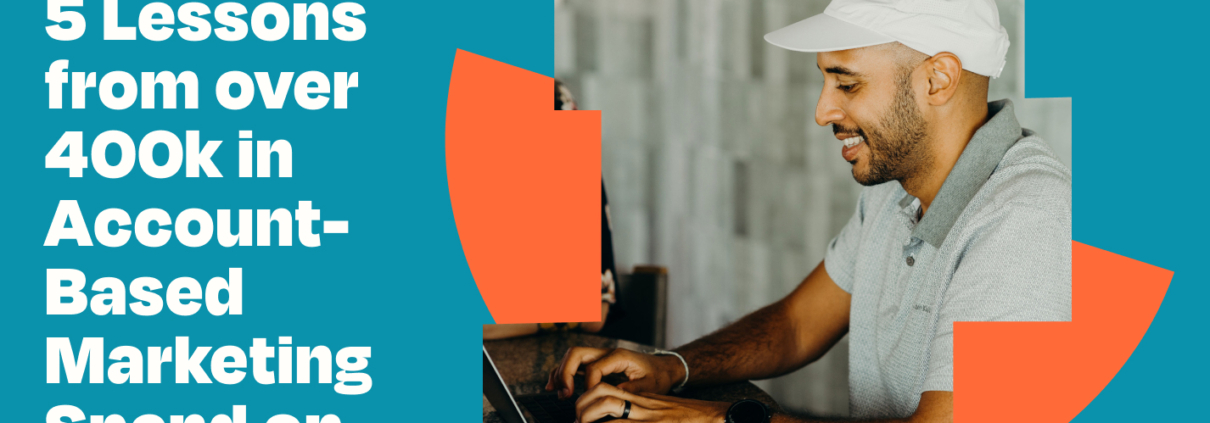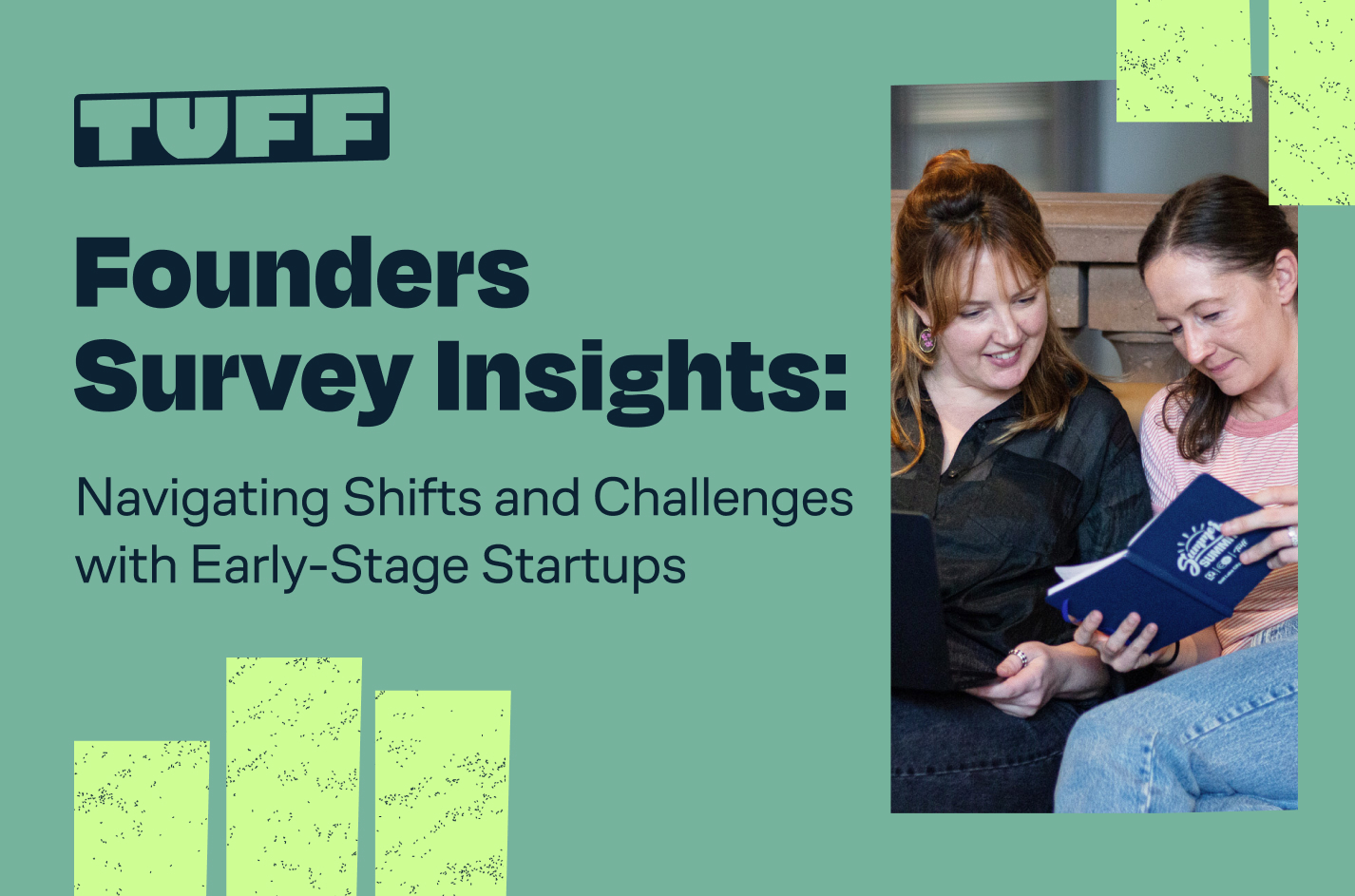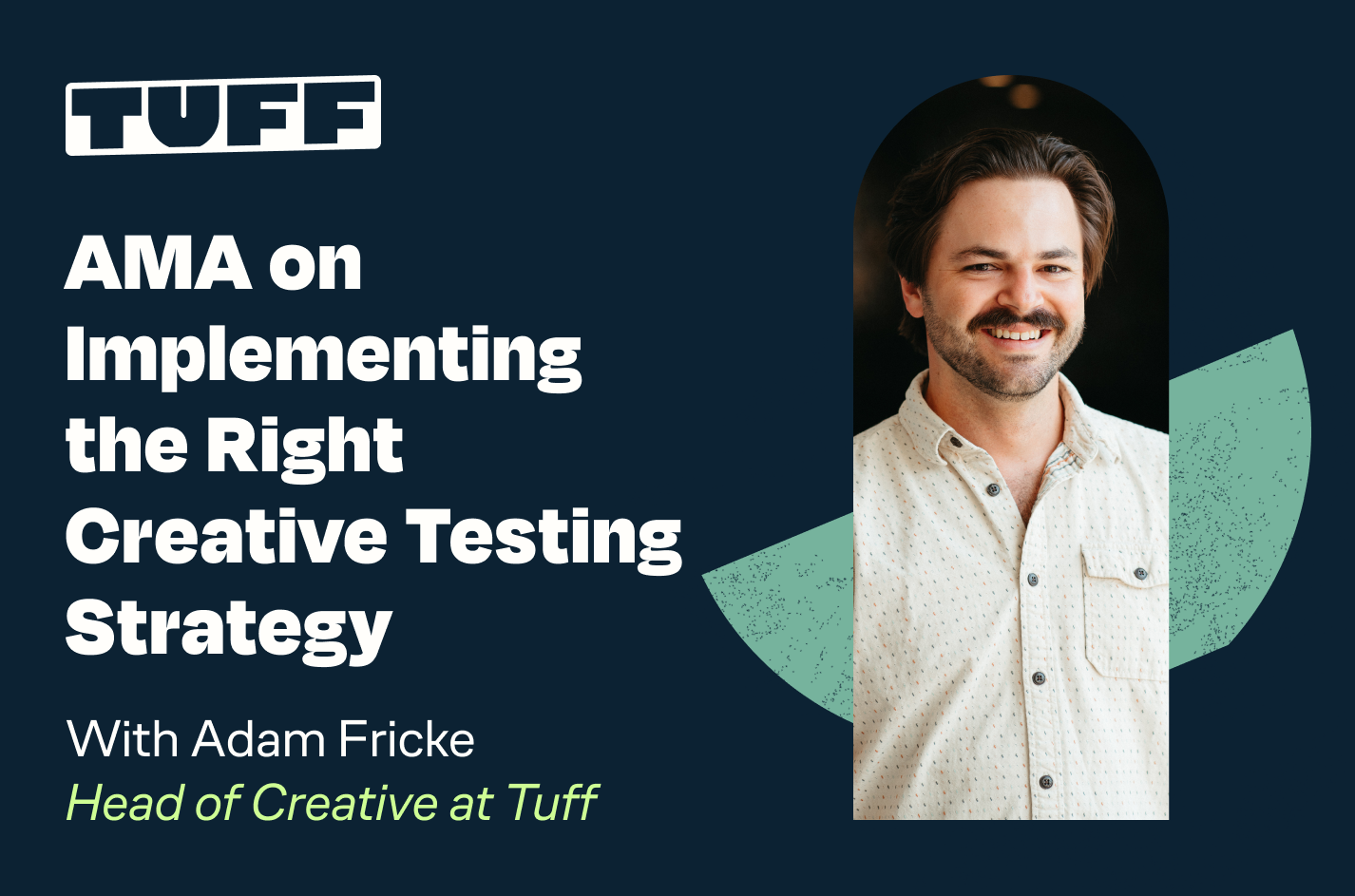5 Lessons From Over $400k In Account-Based Marketing Spend On LinkedIn
You may be wondering, “why is someone from a growth marketing agency is creating content about account-based marketing spend on LinkedIn”? It’s a fair point. While account-based marketing (ABM) has historically been executed by internal teams across marketing and sales, or boutique agencies that only focus on ABM, more and more organizations are utilizing holistic growth tactics to maximize their account-based marketing efforts. Today, we’ll focus on a growth approach to account-based marketing spend on LinkedIn.
Is growth marketing relevant to account-based marketing?
ABM requires a nuanced, holistic approach. An account-based strategy requires experts in paid acquisition, performance creative development, conversion rate optimization, lead flows, content marketing, and SO MUCH more. For organizations to truly maximize account-based efforts, you need to work with a diverse team of generalists and specialists to develop an efficient and effective ABM program.
Growth marketing in particular fits this well – because growth is less about single tactical performance and more about the “big picture results” and integrated strategies.
What is Tuff’s experience with account-based Marketing?
Roughly 20% of our partners currently utilize an Account-Based Marketing approach. While this may not seem like a lot, Tuff works with all sorts of organizations: everything from B2B, D2C, Ecommerce, PaaS, SaaS, and more. Over the last 12 months, more and more of our partner base are adopting an account-based approach, and we expect this trend to continue.
In this article, we’ll focus on a single enterprise partner of Tuff’s. Since October 2022, we’ve managed over $400k ($410k and counting) on LinkedIn in an account-based approach. With a fast-moving strategy (a lot of testing, optimization, and learning), we’ve managed over 76 different campaigns on LinkedIn, and have reduced the cost per marketing qualified lead by 62% in the last 90 days.
Here’s what we’ve learned.
Five Lessons from $400k in account-based Marketing Spend on LinkedIn
- Content is king
- Creative helps, but not as much as you think
- Measurement alignment is critical
- Segment size matters
- Test your optimization events regularly
Content is king
The single biggest lever you can pull in the ABM machine is content. Accounts typically fall into one of three stages of the buyer’s journey: awareness, consideration, and decision. Chances are, accounts that fall into the awareness category need softer calls to action and more introductory content than later-stage accounts, which are already likely familiar with your product and service offerings.
Mapping out the full funnel so that you can understand what messaging resonates best with each audience is the single most impactful exercise you can do. We found via this exercise that by identifying winning content by account stage and prioritizing spend towards winning content by segment, we were able to drive down the cost per marketing qualified lead by 67% in four months. Here’s the creative exercise we went on when originally mapping out the funnel – we lead with questions as to which CTAs, messages, and problems were most impactful for decision-makers at each stage.
If the content itself is the right fit, regardless of optimization (website conversions, lead generation, document ads, message ads), it should appeal highly to your target audience.
There are a few ways you can map your content by user-stage, so start with these frameworks to map your content plans for ABM, go to market, and revisit often:
- What stage are the accounts in this segment?
- Do they need more “introductory” content or more advanced content?
- What type of activity do the accounts in this segment display?
- Are there any industries heavily featured in this segment?
- What problems are my target audience in this segment actively trying to solve?
Creative helps, but not as much as you think
Creative optimization in ABM can be the equivalent of chasing a red herring. The standard metrics for optimizing creative (CTR, CPC, etc.) can be incredibly misleading for trying to reach your overall account-based marketing goals.
Our typical philosophy for performance creative optimization is to identify bottom-performing assets, remediate (or replace) them, and test against the previous winners. When doing this process, we were able to increase our CTR by 96% in 90 days.
These strategic creative decisions and optimizations dramatically increased engagement with our ads. However, a recent audit revealed that often, our highest improvers in terms of CTR drove the same or less marketing-qualified leads than before their optimizations. What gives?!
The audit revealed that you can optimize bottom-performing creative, implement strategic tests to improve engagement with your ads, and more, but bottom performers are often tied to the overall message and content they are associated with. Don’t get caught optimizing to the wrong thing – whatever your core result is, optimize towards that first and foremost.
Being aligned on measurement is crucial
Speaking of optimizing toward your core result, it’s crucial to be aligned with stakeholders on what your measurement of success is. Steve Watt defines three types of measurement in account-based marketing strategies as coverage, engagement, and impact.
- Coverage: Measurement focused on ensuring you’re advertising to the accounts you want to be appearing in front of. Example metrics include account reach percentage, spend by account, etc.
- Engagement: Measurement focused on the actions of stakeholders at the accounts we’re targeting. Example metrics include website visits, leads, interactions with sales, etc.
- Impact: Measurement focused on the business-level data for your organization. Example metrics include speed to close, deal size, close rate, etc.
You can see right away that being misaligned on an objective can lead to catastrophic results. For example, if you are trying to help your sales team close late-stage accounts by advertising to people who have active proposals, you better be prepared to show the data that you are helping speed up the close cycle, or improve the close rate of these deals. If you’re measuring in a different metric, say MQL, for example, you’ll get laughed out of the room because it’s irrelevant if a stakeholder filled out a lead form when they are actively in the proposal stage.
Before you spend a dollar – work on an initial reporting overview and align on objectives. Here’s a list of sample objectives that could be your “north star”, and base your reporting on this.
- New client acquisition
- Improving close rate
- Increasing velocity of the existing pipeline (moving stages)
- Increasing deal size
- Expanding business with existing customers
- Improving retention
- Stimulating referrals
If you are focused on close rate, then it makes zero sense to measure or judge performance based on in-platform ad data. If you’re focused on account coverage, then perhaps judging an account-based campaign on LinkedIn’s reach and frequency metrics may make sense with layering in data from your ABM tool.
Depending on what your “north star” is from a key business objective, you may need to utilize ad platform data, lead and deal data from your CRM, intent data from your ABM tool, or a combination of all of the above.
Without measurement alignment, you will be in a sea of confusion as to what the data truly means. Save yourself time and effort, and start here.
Segment Size Matters
There are two things to consider when targeting a segment and creating a list of targeted accounts:
- What accounts am I trying to reach?
- Who at those accounts am I trying to reach?
Like most LinkedIn advertising efforts, audience size affects ad delivery. Audiences with fewer accounts will be smaller, and thus most likely have a higher CPM and CPC since you’re paying a premium to deliver your ads to select people instead of a broader audience where your bids may be lower.
Like measurement, the segment size is important to align on. Because you’ve already aligned on what your end goal is (logo acquisition, speeding up deals, etc.), you can create a list of prioritized accounts onto base your initial segments. Depending on your objective, you may opt for a larger sized segment of broader accounts to focus on increasing your account reach as much as possible.
You could take an approach where you are targeting only a select few accounts, to advertise to your closest to closing accounts. Maybe you’re somewhere in the middle and trying to increase engagement across a medium-sized segment. Regardless, know that audience size, ad delivery, and account segmentation go hand in hand.
Once you have your segment wrapped up, it’s important to monitor who at these accounts is engaging with your content, converting, or interacting with your site. Using ABM tools, such as 6sense, or CRM tools, such as Hubspot’s ABM software, you can measure and see who at accounts are engaged with your ABM strategy.
Reaching the wrong people at an account is like scheduling a date and showing up at the wrong movie theater (not that I’ve ever done that). You need to be aligned that you are reaching the right people – decision-makers if you’re already in the sales process, the right stakeholders if you’re trying to get new business meetings, et cetera.
A nice way to do this is by utilizing LinkedIn’s job function targeting in addition to the account segment you’ve created. This will narrow your audience by role or function to appear to the people at the accounts you’re targeting who matter the most. This can help you, and your sales team save a lot of time, energy, and money in the long run by focusing on who matters the most in the accounts you’re targeting.
Test Placement Optimizations Often
LinkedIn is a fun platform for account-based marketing spend because there are so many tactics to experiment with. However, across all your different campaigns, and segments, it’s easy to get lost and start to lose control over what your spend looks like. You don’t want it to look like this at the end of the month 👇
account-based marketing is a highly-nuanced, quick-moving strategy, and without the right safeguards in place, you could be chasing the wrong optimization event or make a tactical decision that sets you back.
You should regularly be looking at tables like this to make strategic decisions about where you may be over or underspending, or what may be underperforming. At Tuff, we break this down by content piece, tactic, and key objective (in this instance, leads).
| Content Piece A: | Spend % | Leads % |
| Document Ads | 68% | 53% |
| Sponsored Content | 15% | 11% |
| InMail | 17% | 36% |
| Content Piece B: | Spend % | Leads % |
| Document Ads | 54% | 62% |
| Sponsored Content | 27% | 19% |
| InMail | 19% | 19% |
It’s important to make sure you are confident in how you are defining success (in this instance, it’s leads, but it could be account reach, etc.) to establish how you will measure optimization events and the impact it will have on your end goals.
A non-lead-generating example could be measuring engagement at key accounts. By utilizing a “document ad” format, you can deliver completely ungated, long-form content to key decision makers at target accounts, and see in the segment breakdown if it’s being engaged with.
In our experience, sponsored content (whether it’s optimized for engagement, conversions, or traffic) has performed at a less efficient overall rate than in-platform optimization events on LinkedIn. It could be the opposite for your ABM strategy, depending on your end goals. Experiment, measure, optimize, rinse, repeat.
Ready for more?
The world of account-based marketing is continually changing, growing, and evolving. The emergence of a “growth” approach to ABM is new, but it’s just the latest in a shifting landscape. Key questions on our radar for the next $400k in spend are, “what happens if we change our measurement objective”, “how can we further enable sales by keeping them updated to marketing messages by funnel stage”, “what happens if I try to expand to other platforms, such as Facebook”, and more.
Here’s to constantly growing and learning, cheers.

Richard has spent the last five years working at digital agencies, exploring various industries and company lifecycles. I’ve created and implemented growth campaigns on just about every platform for startups, $20,000,000 a year companies, and everything in-between. When not at work, I can be found cheering on the Penguins or Steelers, spending time with my wife and son, playing disc golf, baking, or walking my dogs.






